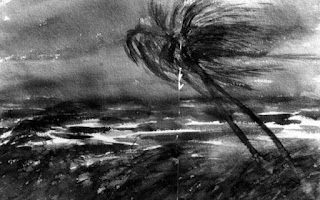 |
| Frances Folsom Cleveland in a photo from 1886. Credit: Library of Congress |
I can't let election season pass without writing about President Grover Cleveland's campaign visit to Florida in 1888. Or, more specifically, Mrs. Grover Cleveland's trip to Florida. The First Lady was the superstar of her time.
The nation's top newspapers all reported on the journey, according to Presidential Visits to Florida: Grover Cleveland 1888, an ebook by author Ray Osborne which I unearthed only in Google Books. The New York Times, Washington Post, and Harper's Weekly, among other publications, kept close tabs on the presidential entourage.
A good part of the interest focused on the president's wife, Frances Folsom Cleveland. She was young and fashionable and a major celebrity of her day.
The newspapers "reported on his visit and with a fascination with his new young wife..." Osborne writes. She was so popular that young women nationwide copied her hairstyles, her clothing, and even the poses she used when being photographed, says the National First Ladies Library. In my second novel, Stitching A Life in Persimmon Hollow, my heroine is one of these awestruck young women who can't believe she might get to see the First Lady on the Florida tour.
A 21-gun salute heralded the Clevelands as they made their way to the Sub-Tropical Exposition in Jacksonville that long-ago day in February 1888. Locals staged a parade, VIPS gave speeches, and a crowd of thousands showed its enthusiasm.
"A perfect tempest of cheering and clapping hands erupted" when Mrs. Cleveland stepped to the podium upon the request of the crowd, Osborne notes. "Five thousand throats cheered and greeted her."
The Feb. 23, 1888 issue of the Palatka Daily News even quotes the First Lady in a sub-head. "Mrs. Cleveland says it is no wonder people flock down here every winter for our delightful climate," the paper proclaims.
The article gushes, telling how she alighted from the train "with the gracefulness of a fawn," and making note of her "pretty sylphlike figure." I kid you not. Military guards were needed to keep back the hordes at the evening reception for the Clevelands at St. James Hotel.
The newspaper did include a reprint of the president's Exposition speech, and listings of every locally important person and organization participating in the day's events. A visit by a presidential couple was a big deal in that pre-everything era - no Internet, no social media, no video, no cell phones, no television, no radio, no endless loops of replays in countless media.
If you think about it, the First Lady's popularity was an amazing thing. It happened without all the tools that accompany celebrity status today. She was a brand before personal brands existed.

